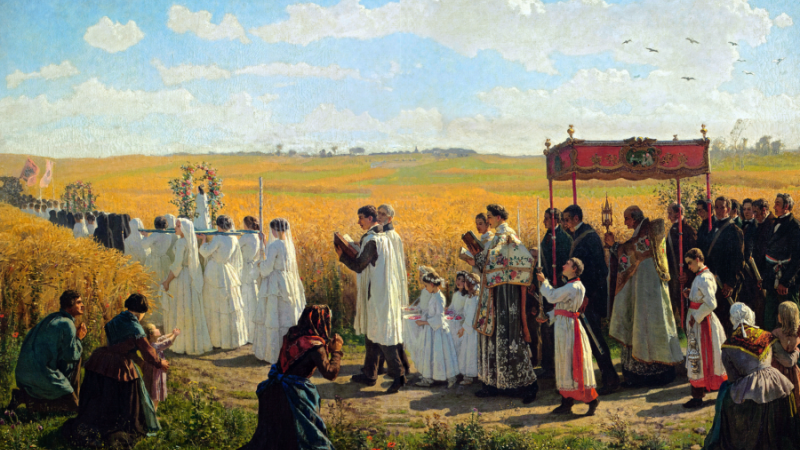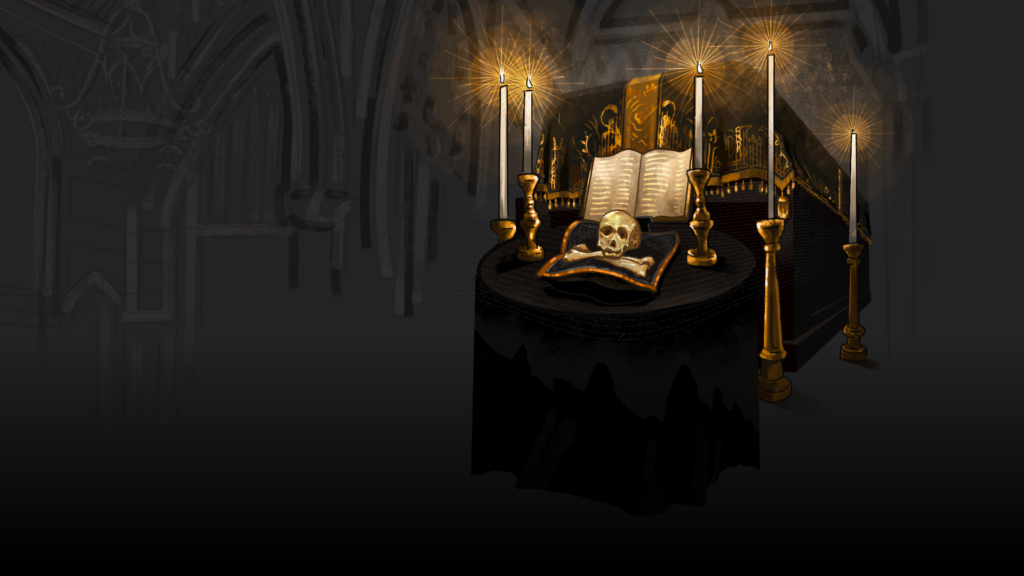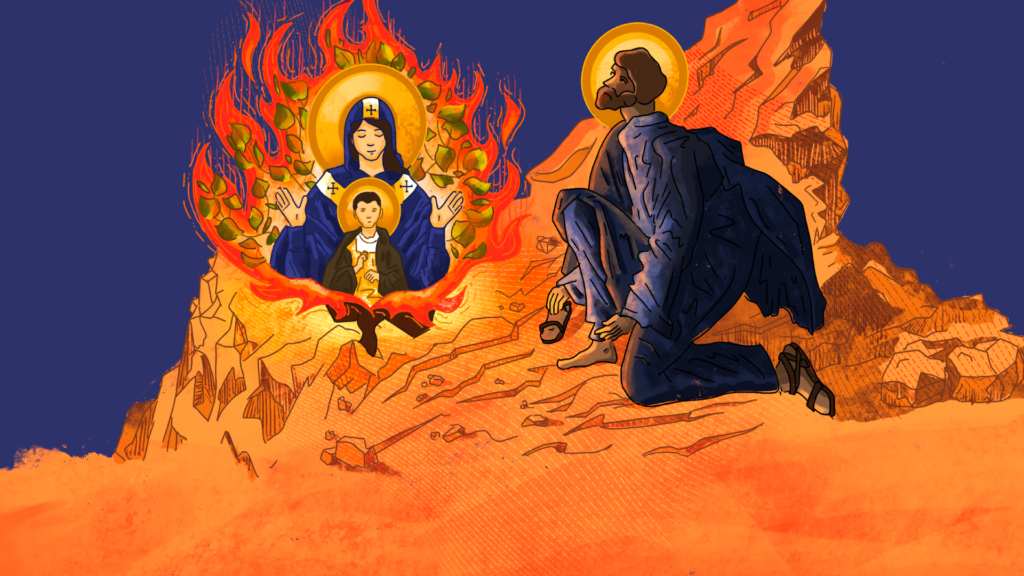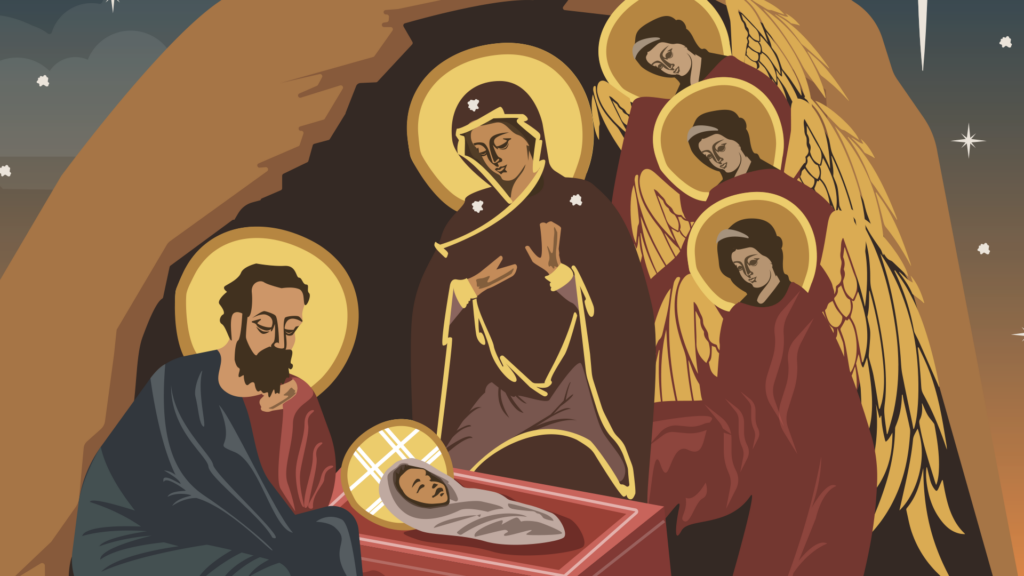The Ember days are occasions to thank God for the blessings received during the previous season, pray for those ordained, and renew ourselves spiritually. They are days of fasting and abstinence. These fasts were initially called “quatuor tempora” (the four times). Later, this name was abbreviated in German and known as “die Quatember,” eventually, it was again altered in English to be “Ember days.”
It has often been theorized that the timing of these fasts developed in response to the Roman cycle of celebrating the change of the seasons. This theory is founded on the premise that the Romans observed three agricultural feriae giving thanks for the fruits of the earth at the time of sowing, harvesting, and vintage. However, this theory is no longer held as it was based on a false characterization of the feriae conceptivae.
The Ember days eventually became days when ordinations were celebrated. However, these fasts are older than their association with ordination, established by the end of the fifth century. Our richest source of information about the early stages of the Ember days is a set of twenty-four sermons Leo the Great delivered. Leo concludes these sermons with an announcement of the observance in the coming week—fasts on Wednesday and Friday and a vigil at the tomb of St. Peter.
When we examine the origin of Ember days, we are not looking for the origin of the Wednesday and Friday fast; this tradition extends back to or near to the Apostolic age. The unique element of the Ember days is the Saturday vigil. In the early Church, the sabbath was not normally seen as a day of fasting. There is one universal exception to this rule—the Paschal vigil. And there is another possible localized exception hinted at in Tertullian’s letter on fasting. Writing as a heretic, he accuses Rome of “sometimes” extending the fast into Saturday. The language of this letter suggests that the Romans were doing this as early as the third century. However, modern scholars believe that the Ember days were likely founded by Pope Damasus I (366-384) or Pope Siricius (384-399).
The Lenten Embertide’s presence in the fifth century is disputed. In Leo’s sermons, he announced the upcoming fasts and vigil for the other three Embertides (May, September, and December), but he did not do this for the Lenten Embertide. One reason for this could be that the Christian community was already engaged in the Lenten fast when he made this announcement, and, in this case, it would have been redundant to announce the upcoming Embertide fast. While it may not have been necessary to announce that fast, it seems that announcing the Embertide vigil would have been fitting. Most liturgical historians agree that the Lenten Ember days were later additions and that the original “quattor tempora” was merely threefold.
Today, the celebration of Ember days continues to exist. After Vatican II, Pope Paul VI said that these days are to be observed as days of prayer for ecclesiastical vocations (Cf Annibale Bugnini, *La riforma liturgica*, no. 39). The Universal Norms on the Liturgical Year and the Calendar, say that they are “Days the Church is accustomed to entreat the Lord for the various needs of humanity, especially for the fruits of the earth and for human labor, and to give thanks to him publicly. (no. 45). The same documents give the duty of scheduling the Ember Days to the local conference of Bishops. In the United States, that authority has been delegated to each Diocesan Bishop (see General Instruction of the Roman Missal, no. 373), and the terminology of “Ember days” has shifted to “Days of Prayer.”
The tradition of routinely setting days aside from prayer and fasting is very ancient in the Roman Church. While the precise origin of the practices has been lost to history, it is certainly one of the oldest traditions in the Roman Church. Embertide has not been formally suppressed and should be revived in the Church today as it is a fitting way for the people of God to renew the lost virtues of asceticism and to entreat the Lord for the various needs of humanity.
Jacob Zepp is a graduate student at the Catholic University of America, where he is pursuing an M.A. in Liturgical Studies/Sacramental Theology. He graduated from Wyoming Catholic College, where he wrote his thesis on liturgical history and theology. Jacob has worked for Exodus since 2020. He and his wife, Anastasia, have one child.






